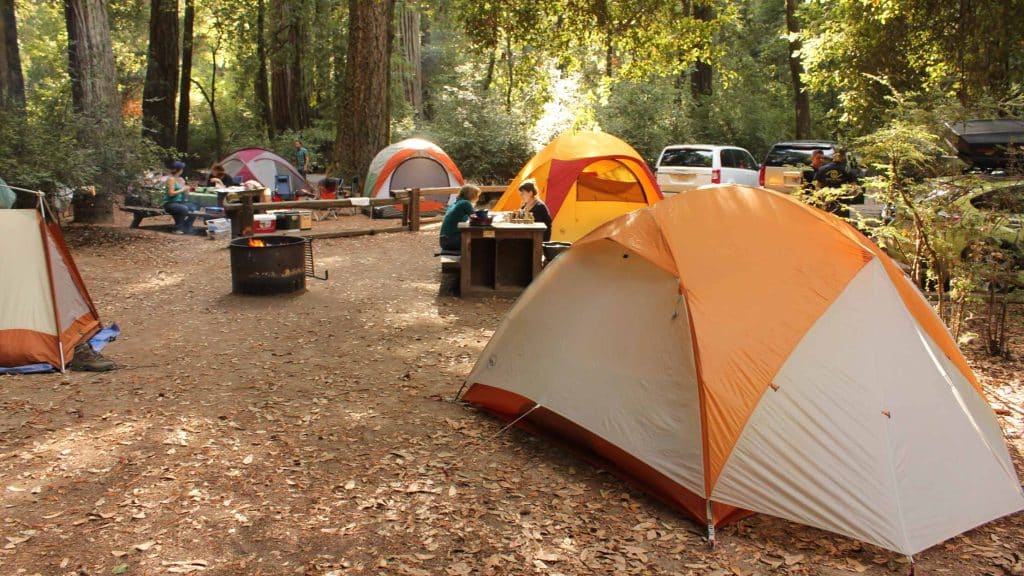Introduction
Leave No Trace camping is a philosophy aimed at preserving the natural environment while allowing individuals to enjoy the great outdoors. This approach emphasizes the importance of minimizing human impact on ecosystems, ensuring that natural resources remain untouched for future generations.
By adopting these practices, campers can contribute to the sustainability of nature while enhancing their own experiences in the wilderness. The principles of Leave No Trace are designed to educate outdoor enthusiasts about responsible recreation, allowing them to enjoy nature without compromising its integrity.
Understanding the core concepts of Leave No Trace can significantly impact the way camping trips are planned and executed. The seven principles of Leave No Trace provide a framework for responsible camping that includes considerations for the environment, wildlife, and fellow outdoor enthusiasts.
Each principle encourages thoughtful actions and decisions that lead to a more harmonious relationship between humans and nature. By embracing these best practices, campers can experience the joys of nature while ensuring its preservation.
Plan Ahead and Prepare

Planning ahead is fundamental to Leave No Trace camping. Before heading into the wilderness, it is crucial to research the area, including its regulations, potential hazards, and weather conditions. This preparation not only enhances safety but also promotes a deeper understanding of the environment being visited.
Knowing the local flora and fauna can foster appreciation for the natural world and aid in making informed decisions regarding campsite selection and behavior while camping.
- Lindsay Leaf, Marketing Director at Go Live Outdoor
Having the right gear is also essential for a successful camping trip. Equipment should be chosen based on the specific conditions and activities planned. Lightweight and compact gear not only makes for easier transport but also reduces the likelihood of leaving behind waste.
Additionally, creating a checklist of necessary supplies can help ensure that everything needed is packed, minimizing the chances of needing to forage or disrupt the environment for resources during the trip.
Choose the Right Campsite
Selecting the appropriate campsite is a critical aspect of practicing Leave No Trace. Campsites should be chosen with care, considering factors such as distance from water sources, proximity to trails, and the overall impact on the landscape.
It is advisable to camp at least 200 feet away from lakes and rivers to protect water quality and allow wildlife to thrive in their natural habitats. Established campsites should be utilized whenever possible, as these areas are already impacted and will minimize the spread of human activity into pristine locations.
When selecting a campsite, attention should be paid to the type of terrain and vegetation. Camping on durable surfaces, such as gravel, dry grass, or established trails, helps reduce soil erosion and plant damage.
Avoiding areas with sensitive vegetation or wildlife habitats is essential for preserving the integrity of the ecosystem. Following these guidelines contributes to the health of the environment and promotes sustainable camping practices.
Travel and Camp on Durable Surfaces

Traveling and camping on durable surfaces is one of the most effective ways to reduce the impact on the environment. Durable surfaces include established trails, campsites, and rocky areas that can withstand foot traffic without sustaining damage.
Sticking to these surfaces prevents soil erosion and protects delicate ecosystems. When hiking, it is important to remain on marked trails to prevent the creation of new paths that can lead to habitat destruction.
- Dereck Rizo Patron, CEO of Trainest
In addition to maintaining existing trails, it is also beneficial to minimize the number of campsites used. This can be achieved by consolidating groups to a single site rather than spreading out across multiple locations.
Campers are encouraged to follow the principle of “Leave What You Find” by avoiding the collection of natural resources, such as rocks and plants, which can disrupt the local environment. Practicing these habits contributes to the preservation of the landscape and supports the health of the ecosystem.
Dispose of Waste Properly
Proper waste disposal is a fundamental principle of Leave No Trace camping. Campers should be prepared to pack out all trash, leftover food, and hygiene products. This commitment to responsible waste management prevents pollution and protects wildlife from ingesting harmful materials.
It is essential to carry waste bags and containers to ensure that all refuse is collected and transported back to civilization. This practice not only maintains the cleanliness of the campsite but also upholds the integrity of the natural environment.
- Jessica Shee from iboysoft.com
Human waste management is another critical aspect of responsible camping. It is important to follow local regulations regarding waste disposal, which may include using designated toilets or digging a “cat hole” at least 200 feet away from water sources and trails.
The hole should be at least six to eight inches deep to facilitate decomposition. Using biodegradable soap for washing dishes and personal hygiene can further minimize the impact on the environment. By following these guidelines, campers contribute to a healthier ecosystem and set an example for others.
Respect Wildlife
Respecting wildlife is a vital component of Leave No Trace camping. Campers should observe animals from a safe distance and avoid feeding them, as human food can be harmful to wildlife. Feeding animals can alter their natural behavior, leading to dependency on human-provided food sources.
Proper food storage techniques, such as using bear-resistant containers or hanging food from trees, are crucial for preventing wildlife encounters and ensuring the safety of both campers and animals.
Additionally, campers are encouraged to be mindful of their surroundings and to educate themselves about the species inhabiting the area.
Understanding the behaviors and habitats of local wildlife fosters a sense of appreciation and encourages respectful interactions. By adhering to these principles, campers can coexist harmoniously with wildlife and contribute to the conservation of natural ecosystems.
Conclusion
The importance of Leave No Trace camping practices cannot be overstated. By planning ahead, choosing the right campsite, traveling on durable surfaces, disposing of waste properly, and respecting wildlife, campers can significantly reduce their environmental impact.
Embracing these principles not only benefits the natural world but also enhances the camping experience for individuals and communities alike. A commitment to Leave No Trace ensures that the beauty of nature is preserved for future generations, allowing them to enjoy the wonders of the outdoors just as we do today.
By adopting these practices, a more sustainable and responsible relationship with the environment can be fostered, leading to a deeper appreciation of the natural world.

